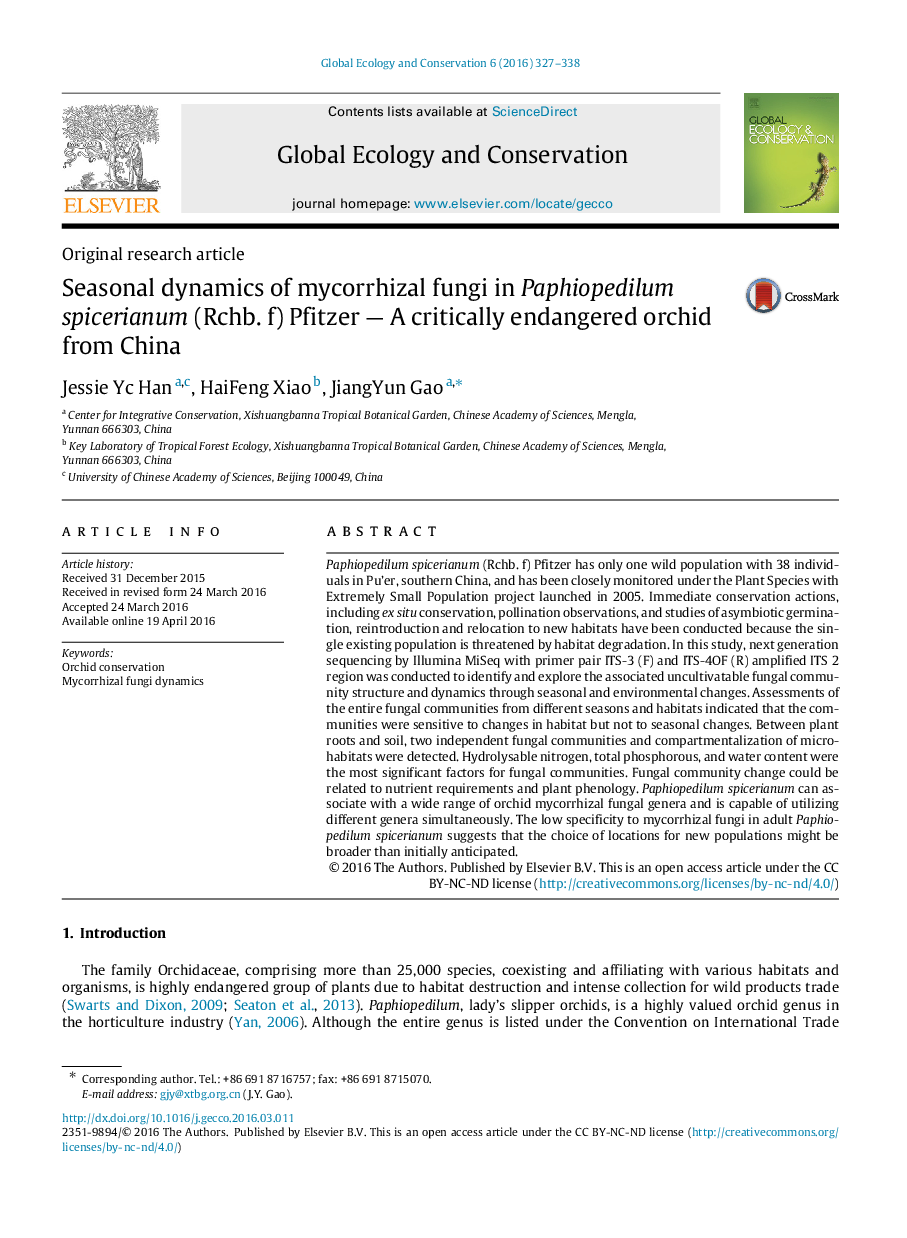| Article ID | Journal | Published Year | Pages | File Type |
|---|---|---|---|---|
| 4379655 | Global Ecology and Conservation | 2016 | 12 Pages |
Paphiopedilum spicerianum (Rchb. f) Pfitzer has only one wild population with 38 individuals in Pu’er, southern China, and has been closely monitored under the Plant Species with Extremely Small Population project launched in 2005. Immediate conservation actions, including ex situ conservation, pollination observations, and studies of asymbiotic germination, reintroduction and relocation to new habitats have been conducted because the single existing population is threatened by habitat degradation. In this study, next generation sequencing by Illumina MiSeq with primer pair ITS-3 (F) and ITS-4OF (R) amplified ITS 2 region was conducted to identify and explore the associated uncultivatable fungal community structure and dynamics through seasonal and environmental changes. Assessments of the entire fungal communities from different seasons and habitats indicated that the communities were sensitive to changes in habitat but not to seasonal changes. Between plant roots and soil, two independent fungal communities and compartmentalization of microhabitats were detected. Hydrolysable nitrogen, total phosphorous, and water content were the most significant factors for fungal communities. Fungal community change could be related to nutrient requirements and plant phenology. Paphiopedilum spicerianum can associate with a wide range of orchid mycorrhizal fungal genera and is capable of utilizing different genera simultaneously. The low specificity to mycorrhizal fungi in adult Paphiopedilum spicerianum suggests that the choice of locations for new populations might be broader than initially anticipated.
